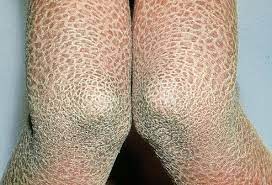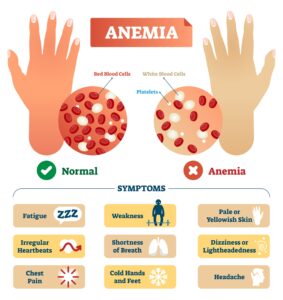What is harlequin ichthyosis?
Harlequin ichthyosis is a severe hereditary skin condition. Infants born prematurely with this syndrome have extremely thick, rigid skin covering the majority of their bodies. The skin is divided into enormous diamond-shaped plates by deep cracks (fissures). These skin irregularities impair the shape of the eyelids, nose, mouth, and ears, as well as the ability of the arms and legs to move freely. In neonates with harlequin ichthyosis, restricted chest mobility can result in breathing difficulties and respiratory failure. Infants that are affected also have eating difficulties.
Cause
A loss-of-function mutation in the ABCA12 gene causes harlequin-type ichthyosis. This gene plays a critical role in the control of protein synthesis required for skin layer formation. Mutations in the gene affect lipid transport in the epidermal layer and may also result in smaller versions of the proteins involved in skin development. Less severe alterations result in a collodion membrane and an appearance similar to congenital ichthyosiform erythroderma.
ABCA12 is an ATP-binding cassette transporter (ABC transporter), a wide family of proteins that hydrolyze ATP in order to transport cargo across cell membranes. ABCA12 is believed to be a lipid transporter in keratinocytes that is required for the transfer of lipids into lamellar granules during the creation of the skin’s lipid barrier.
Symptoms
Among the symptoms of harlequin ichthyosis are the following:
- Infants’ skin is covered with thick plate-like scales.
- Tight skin presses on the area around the eyes and mouth, forcing the eyelids and lips to flip inside out, displaying their red inner linings.
- The skin’s rigidity may significantly limit the chest and abdomen, making breathing and eating difficult.
- Small, bloated, and partially flexed hands and feet are possible.
- The thick skin that connects the ears to the head may give the appearance of being deformed or missing.
- Physical development is slowed down due to the high-calorie requirements of skin function.
- Hair loss in older children
- Nose flat (depressed nasal bridge)
- Hearing impairment
- Respiratory infections are frequent
- Joint motion is compromised
- Normal mental and intellectual development occurs.

Diagnosis
Harlequin ichthyosis is diagnosed at birth based on the physical appearance of the infant.
During the second or third trimester, ultrasonography may reveal some of the characteristics of harlequin ichthyosis. Prenatal testing of fetal DNA for ABCA12 gene variants is possible.
Treatment
There is no cure for harlequin ichthyosis, and therapy focuses on skin protection and infection prevention.
Following birth, the thick plate-like outer layer of skin ultimately breaks and peels away, exposing the dermis’s delicate inner layers. For the first six weeks of life, the majority of harlequin newborns will require one-on-one nursing care. Antibiotic medication may also be important during this time period to prevent or treat the infection.
Emollients that soften the skin, particularly those containing urea, salicylic acid, or alpha hydroxy acids, are particularly beneficial when used immediately after bathing. These treatments help maintain the skin’s moisture and pliability while avoiding cracking and fissuring, which can result in secondary bacterial infection.
Early systemic therapy with oral retinoids (e.g., acitretin or isotretinoin) has also been proven to enhance overall survival by healing skin fissures, softening or resolving plate-like scales.
Survivability
Harlequin ichthyosis is fatal. Along with breathing and eating issues, babies born with harlequin ichthyosis may have additional substantial health challenges, including the following:
- Birth prematurely
- Body temperature is too low
- Dehydration
- Elevated sodium levels in the blood Increased
- likelihood of contracting a respiratory illness
- There is a risk of eye damage as a result of the eyelids not shutting properly.
- Probability of developing hearing impairments
- Scaling that is severe at birth will gradually improve. Scales typically dislodge over several weeks, revealing fresh, more flexible skin. During this brief period, infants must be kept in a neonatal intensive care unit (NICU) where nurses can monitor their vital signs and attend to their every need.
Historically, the majority of neonates born with harlequin ichthyosis died during the first few days of life. Neonatal intensive care advances have increased their chances of survival. However, more than half of infants born with this disease die within the first few weeks of life.



